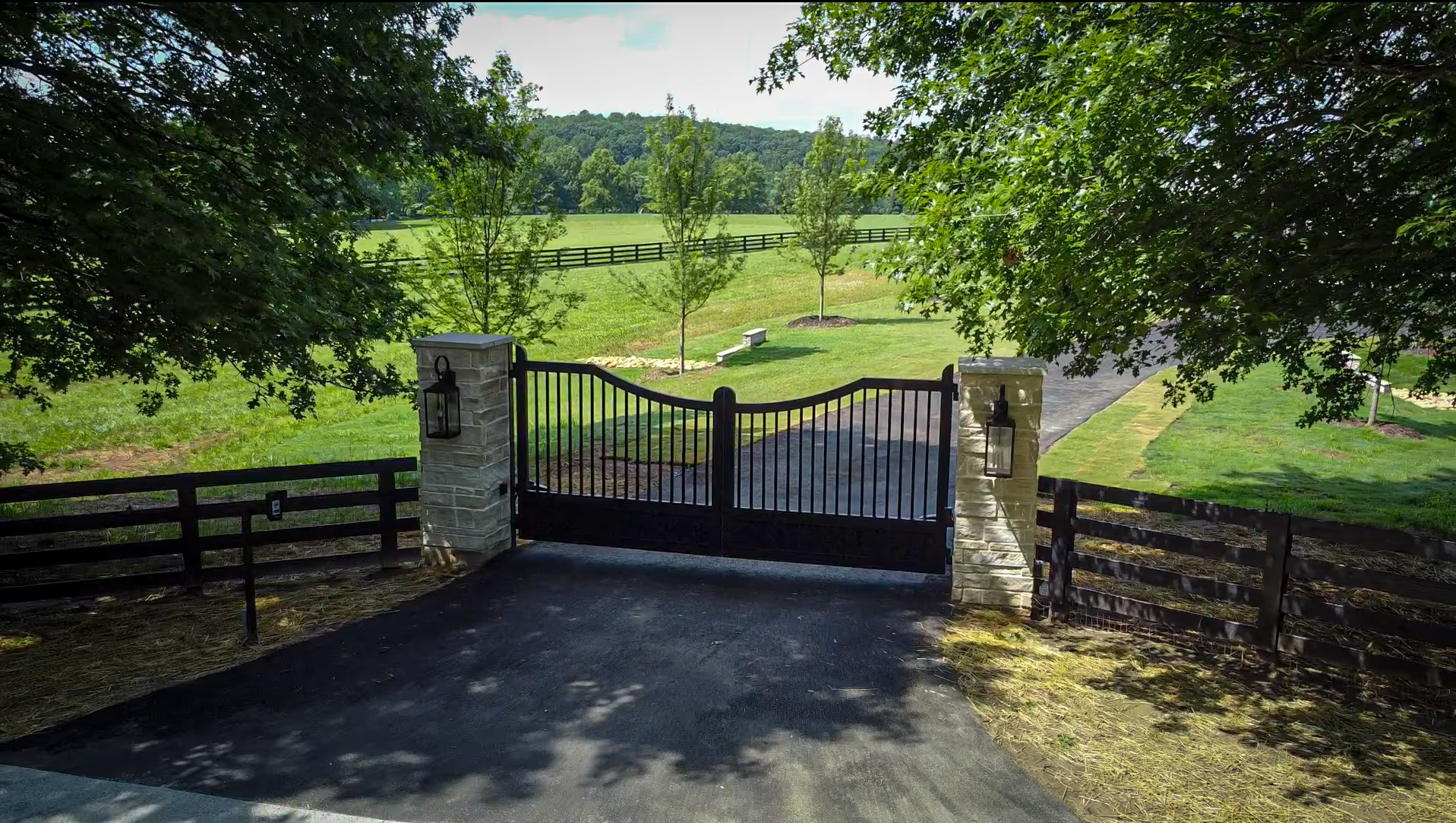
What realtors and sellers need to know about ROI, curb appeal, and buyer perception.
In real estate, first impressions are everything. But what if your driveway could add more than just aesthetic appeal? For realtors, home sellers, and high-end flippers in Georgia, driveway gates are becoming a secret weapon in both presentation and price. These installations combine visual impact with functional upgrades like security and privacy. But do they actually raise home value, or are they just expensive eye candy? In this article, we break down the data, explore market behavior, and show how a well-designed gate can influence perception, shorten time on market, and increase offers.
Buyers are influenced in the first seven seconds of a home visit. That makes curb appeal not just helpful, but essential. Driveway gates contribute to this impact by adding depth, balance, and intention to a property’s entrance. They don’t just say “private.” They say “premium.”
In Georgia’s high-income neighborhoods like Milton, Roswell, and Buckhead, buyers expect properties to stand out. A custom driveway gate adds scale to the approach, draws the eye, and gives the home a sense of completeness. Even in Woodstock or Canton, a gate can separate a listing from comparable homes with similar square footage.
How a gate elevates curb appeal:
Listing photos improve, too. On MLS or Zillow, a gated property draws clicks faster. It signals that the home is both secure and special. In many cases, it becomes the thumbnail shot that drives showing requests.
Buyer psychology also plays a role. A gate represents control and ownership. It suggests the current owners cared about privacy, design, and functionality. That perception transfers to the rest of the property.
In short, a driveway gate helps sell the feeling of the home. And that feeling helps drive value.
.avif)
Let’s move from perception to performance. How much does a driveway gate actually add to home value, and is it worth the investment for sellers and flippers?
According to Remodeling Magazine’s Cost vs. Value Report and additional data from HomeLight, outdoor improvements consistently generate strong ROI. While specific studies on gates are limited, combining fencing, entry improvements, and security systems offers a clear window into their impact.
Key ROI Metrics:
In North Atlanta markets, gates are often viewed as an expected feature for homes listed above $1.2M. For homes just below that threshold, adding a gate can push perceived value over the line and increase buyer willingness to pay a premium.
Real-world example:
A $950K listing in Alpharetta was sitting with no offers for 45 days. After installing a simple powder-coated steel gate with LiftMaster automation, showings increased by 60 percent and the home sold within three weeks for $1.01M.
While appraisers rarely assign a specific line item to the gate alone, they do assess “site improvements” and “overall appeal,” which both receive a bump when quality hardscaping and entry systems are present. The gate contributes to these categories quietly but powerfully.
For flippers or investors, the cost of a basic gate and automation system starts around $10K to $15K. If it allows you to list $25K to $40K higher—or close weeks faster—it often more than pays for itself.
Not all gates increase home value. The ones that do are carefully designed, well-installed, and properly automated. A poorly hung or out-of-place gate can actually hurt curb appeal or raise inspection red flags.
To get the maximum return, focus on these three value drivers:
1. Architectural Harmony
Your gate should match the lines, colors, and style of the home. For traditional brick homes, flat-top gates with decorative pickets work best. Modern homes benefit from minimalist horizontal slats or brushed metal finishes.
Pro tip: Use mockups to visualize before installing. At YNGC, we provide Photoshop overlays that help clients see how a gate will look on their home before fabrication.
2. Smart Automation
A beautiful gate without automation feels incomplete. Buyers want convenience. A good system includes:
LiftMaster and Doorking are two of the most trusted brands in Georgia residential installs. At YNGC, we only use American-made components with long-term reliability and available parts.
3. Neighborhood and Market Context
In some cases, a gate adds value simply by helping your property “keep up” with the neighbors. In others, it becomes the differentiator in a price band with heavy competition. Either way, it should feel appropriate to the street.
Avoid overbuilding. A massive aluminum estate gate on a home surrounded by ranch houses may confuse buyers or create a mismatch in tone. We often advise clients on right-sizing their design based on property width, style, and price point.
Bonus Upside: If your buyer wants to install cameras, an automated gate creates the perfect backbone for future upgrades. It shows forethought and adds flexibility to the property.